Story at a glance:
- Linear LED lighting refers to those light fixtures arranged in continuous, elongated lines.
- There are four main categories of LED linear lights: recessed, surface mounted, suspended, and LED strips.
- Aside from providing improved directional lighting, LED linear lights are also more energy-efficient, long-lasting, cost effective, and versatile than incandescent or fluorescent lights.
First developed in the 1950s, linear lights—or those lights arranged in continuous lines—were historically used almost exclusively in industrial settings. These early linear light channels featured fluorescent tube bulbs and allowed for improved illumination of large spaces.
As lighting technology advanced, however, and the energy-efficient light-emitting diode (LED) became popular, the applications of linear lighting expanded to include a variety of residential and commercial uses as well.
Here we explore the benefits of linear LED lighting, the different types of linear light fixtures, and provide beautiful examples of linear lighting in action.
What is Linear Lighting?
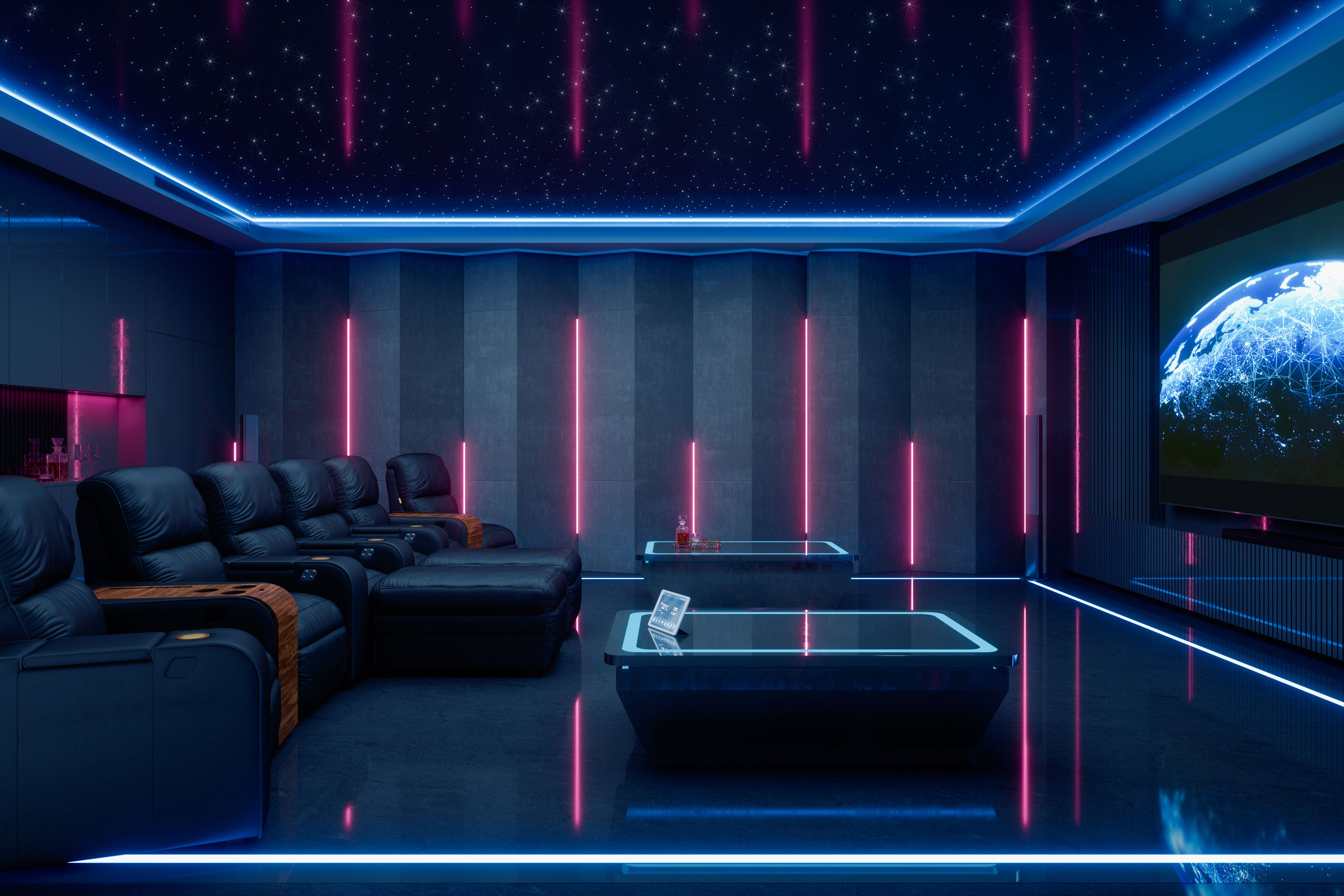
Dramatic use of linear lighting in a private theatre space. Photo courtesy of American Lighting
In the most fundamental sense, linear LED lighting simply refers to lighting that is arranged in a continuous, elongated line rather than, say, a square or round bulb. LEDs are especially well-suited for linear light solutions, as the individual diodes are very small, which makes it easier to package a large number of them together on the same strip of housing.
This does not, however, necessarily mean that linear lights must be arranged in straight lines. They can also accommodate angles, curves, and even completely round fixtures.
Linear lights make use of either light channels, tubes, or strips.
Types of Linear Lighting
Generally speaking there are four main types of LED linear lighting fixtures: recessed, surface mounted, pendant/suspended, and strips.
- Recessed. For this type of linear lighting fixtures are recessed into a wall, ceiling, or floor so they do not protrude, allowing for a more efficient use of space.
- Surface-mounted. The most common type of linear light, surface-mounted fixtures are those that are mounted directly onto a wall or ceiling.
- Pendant or suspended. Suspended linear light fixtures hang from the ceiling, similar to a chandelier. These are ideal in facilities with high headroom.
- LED strips/tape. LED light strips are long, flexible circuit boards extensively populated by LEDs; they can be cut to size and typically feature adhesive backing for easy installation.
All four types of linear light fixtures have their uses and share the same basic advantageous qualities.
Benefits of Linear LED Lighting

3000K COB Tape Light is seen here over the range. Photo courtesy of American Lighting
When it comes to modern lighting solutions, there are very few that offer such a wide range of benefits as LED linear lighting.
Durable & Long-Lasting
Due to their lack of filament—the part that burns out in incandescent bulbs—and use of epoxy resin over glass, LED lights are much more durable than traditional light bulbs while also possessing a much longer shelf life.
On average LEDs have an operational lifespan of 50,000 to 100,000 hours, or between 10 and 20 years depending on the frequency of use. This is nearly 25 times longer than conventional fluorescent and incandescent bulbs.
Energy-Efficient
On average LED lights are at least 75% more energy-efficient than standard incandescent or fluorescent bulbs, according to the US Department of Energy. Facilities that make use of LED light fixtures have lower operating costs and produce fewer carbon emissions compared to those without energy-efficient lighting solutions.
Cost-Efficient
Despite their higher upfront costs, linear LED lights are ultimately more cost effective than fluorescent or incandescent linear light fixtures, as they require less energy to run and do not need to be replaced nearly as often.
Provides Directional Light
One of the most obvious benefits of linear light sources is that they provide directional light, which reduces the need for diffusers (such as lampshades) or reflectors. This ultimately makes linear lights more energy efficient, as there is no way for the light to become trapped within the fixture.
Directional light is ideal for illuminating large areas that require even lighting, such as in offices or over workspaces.
Improved Mood & Productivity
Linear LED lights can also help improve mood and occupant productivity in that they are able to simulate natural sunlight better than fluorescent and incandescent lights. Regular exposure to sunlight is known to improve mood and reduce stress. In fact, it’s crucial to our health and wellbeing.
“Light is a stimulant of our biological system that drives physiological change, constantly signaling to our bodies when to produce chemicals, initiate functions, and even clean our brains of the day’s plaque,” Jennifer Kirkpatrick, director of sales at American Lighting, previously wrote for gb&dPRO.
Due to their wide range of colors, wavelengths, and lighting temperatures, LED lights offer a high level of control that allows them to mimic the circadian impact and psychological effect of natural light.
“Lighting technologies like linear lighting, also known as tape light, allow us to illuminate ceilings and walls in new ways that can help deliver the light needed for proper circadian health,” Kirkpatrick says. “Smart control systems can raise and lower the lights as needed on schedules that keep us in sync with natural light.”
No Strike Delay
Unlike fluorescent or incandescent lights—linear or otherwise—LED linear light fixtures have no strike delay. This means that almost as soon as the switch is flipped LED lights will turn on to full brightness rather than gradually getting brighter over time.
Versatile
Linear lighting is incredibly versatile and has a wide range of potential applications, within a diverse array of facilities. Linear strip or tape lights are especially adaptable and may be installed just about anywhere you can think of. Most modern LEDs also support a range of colors as well as true white light, allowing for highly customizable lighting solutions.
“With RGBTW consumers virtually have an unlimited RGB palette of color combinations along with the ability to adjust true white light ranging from 2700K up 6000K,” Kirkpatrick said. “The intense color saturation, transition effects, and fade to white lighting effects delivers limitless color combinations with a 50,000 hours performance life.”
Where & How to Use Linear LED Lighting
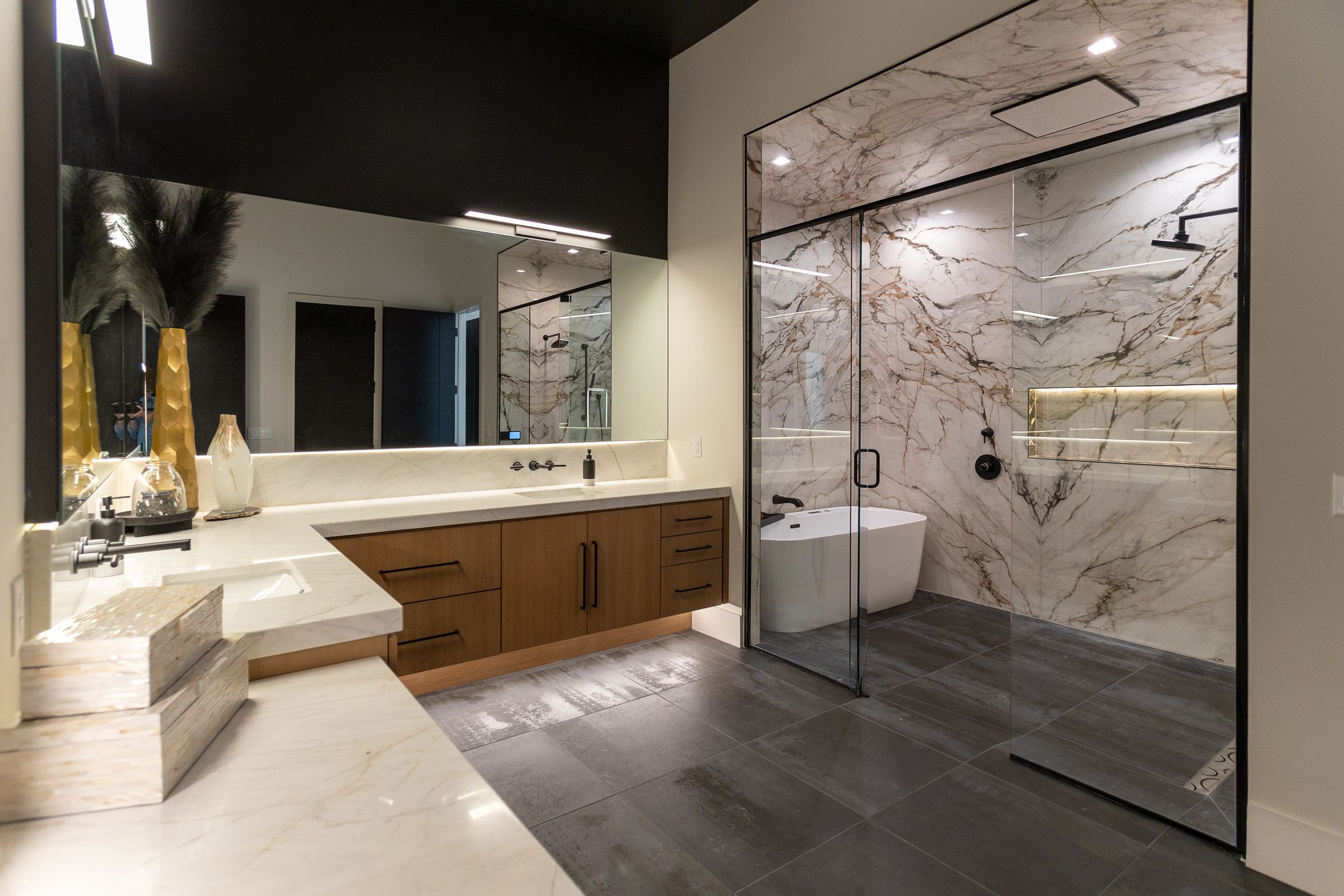
A combination of linear and traditional light fixtures brings elegance to the master bath shower. Photo courtesy of American Lighting
As previously mentioned, linear LED lights are highly versatile and may be used in a variety of practical and creative ways. Here are some of our favorites.
Under Shelving & Staircases
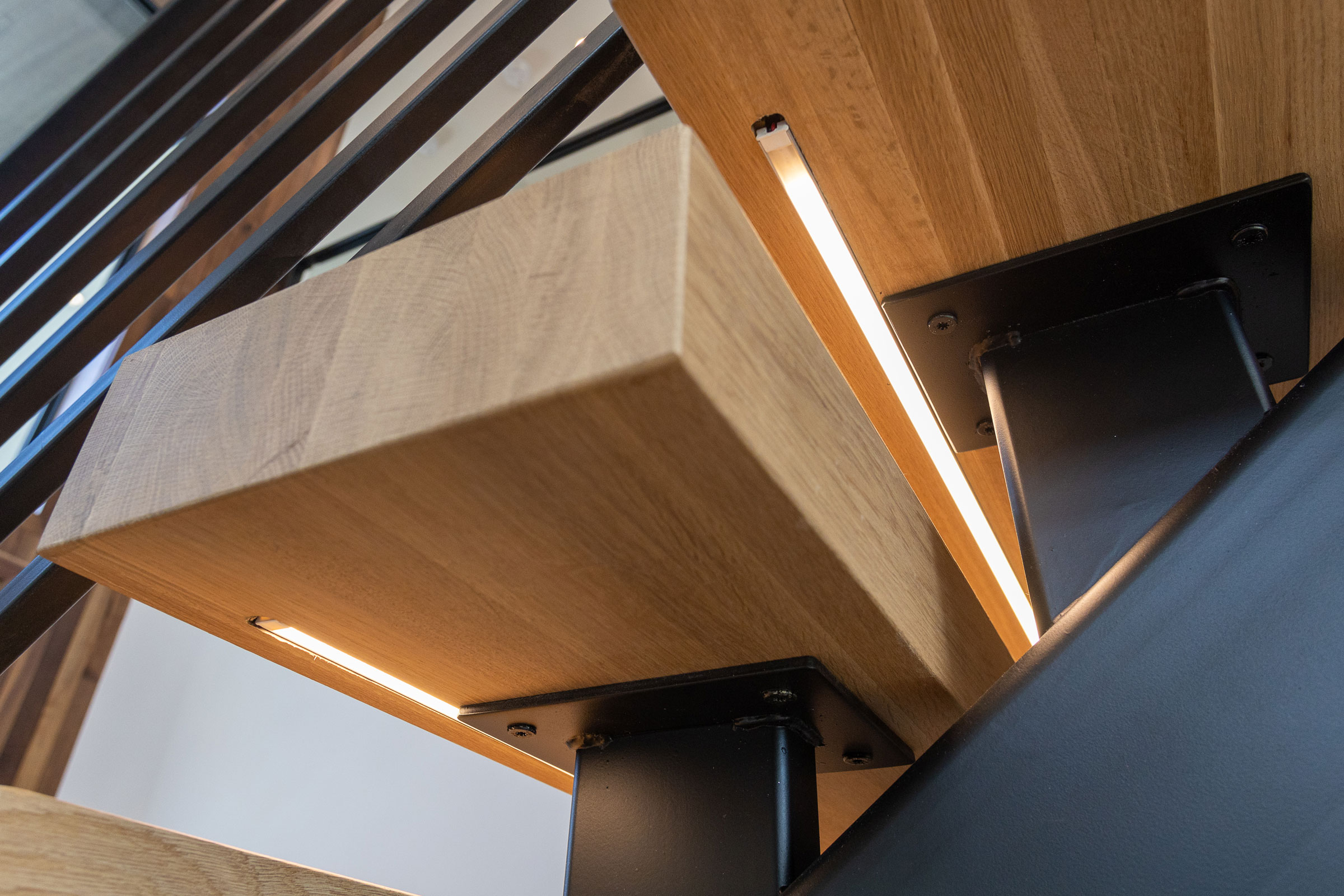
Under the stairway step planks you’ll find 3000K COB Tape Lighting Economy Extrusions. Photo courtesy of American Lighting
One of the most practical places to install linear lighting is underneath shelves or cabinets where ceiling-mounted light fixtures may not adequately illuminate. This is especially ideal for use in kitchens, as it ensures that all countertops receive adequate lighting for safe handling and preparation of food.
Similarly, linear lights may be affixed to the risers of traditional staircases or installed underneath floating staircases. When switched on these lights reduce the risk of tripping by illuminating and drawing attention to each step.
Over Workspaces
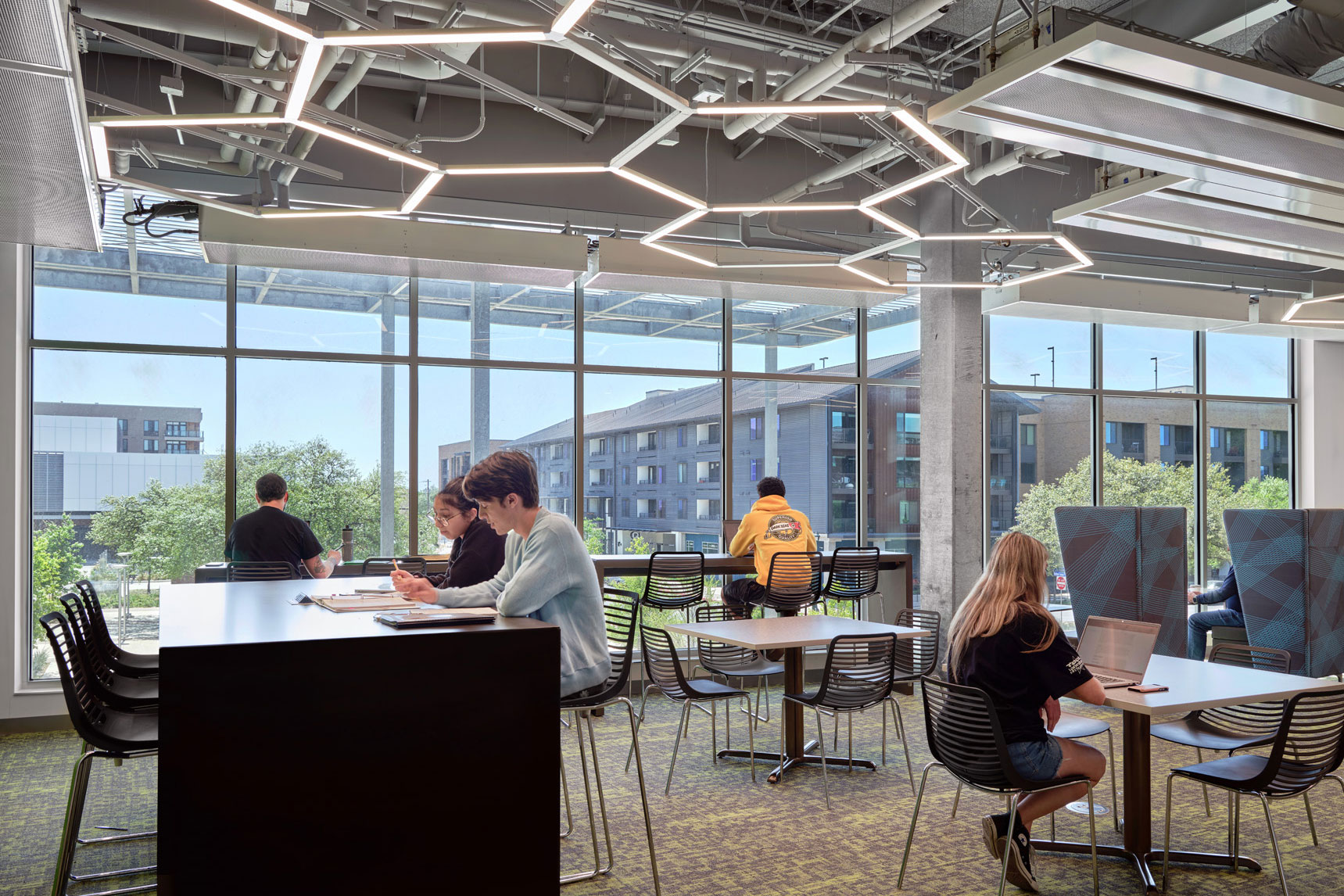
Hexagonal linear light fixtures installed over study spaces in the Austin Community College Highland Campus. Photo by Dror Baldinger
Linear lighting is also incredibly useful over workspaces—be they in a residential or commercial setting—as it provides a wide distribution of uniform light. LED linear lighting can also help bolster productivity and drive performance, making them ideal for overhead use in offices and classrooms.
Pendant or suspended linear light fixtures are commonly found overtop dining tables, kitchen islands, and office workstations.
As Mood or Wash Lights
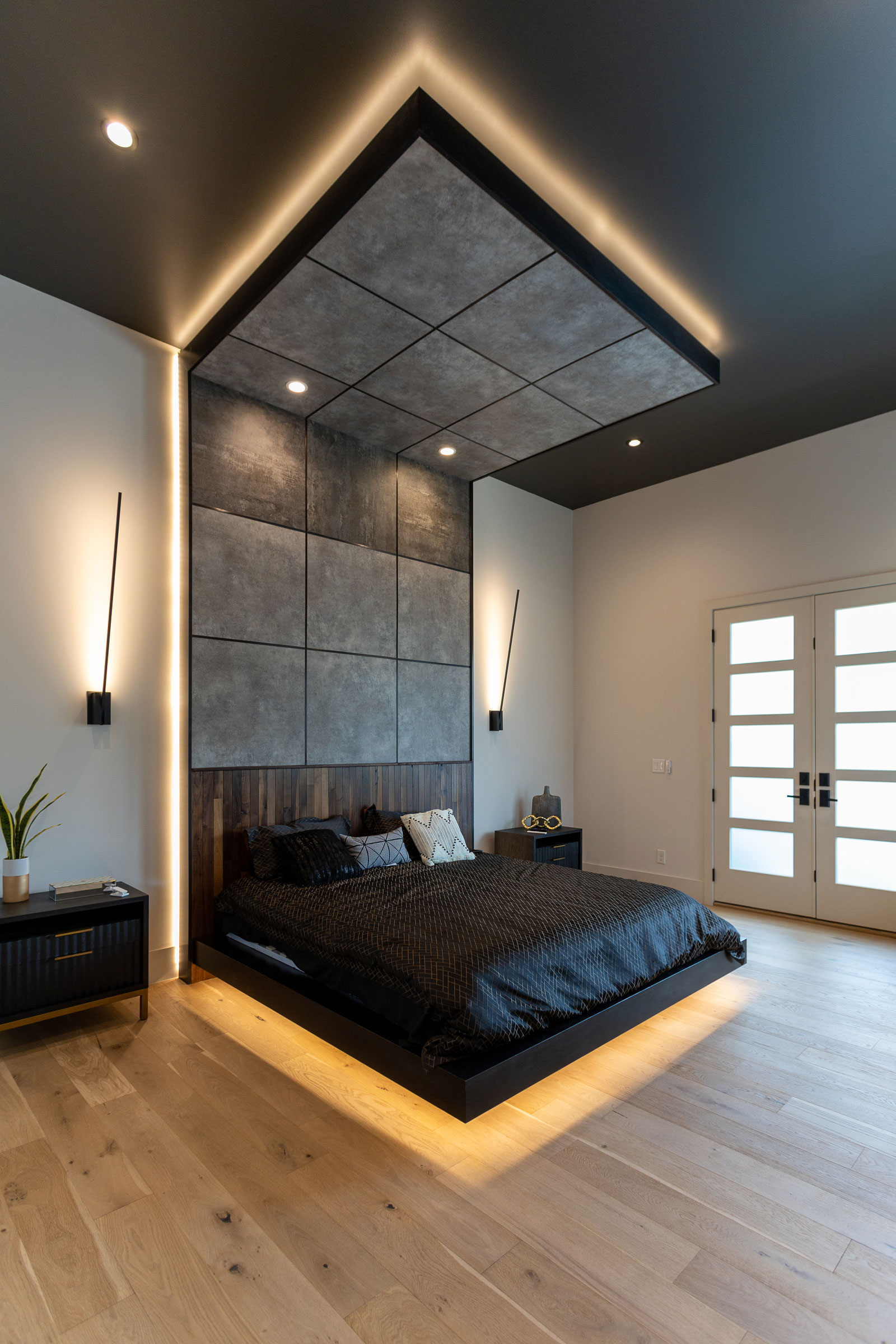
On the ceiling above the bed is 3000 Standard Grade HD Universal Extrusions. Photo courtesy of American Lighting
For a more dramatic effect, linear lights can be installed in recessed alcoves—either on the walls, ceiling, or floor—so that when switched on they create a “wash” of diffused light across nearby surfaces.
This effect is especially useful for mood setting and creating ambience, as it produces a softer glow rather than fully illuminating a space, which can also help draw attention to specific features.
Recessed linear light fixtures are the easiest way to produce these washes of light—they are commonly installed in bedrooms, relaxation areas, showers, and the like.
Along Walls
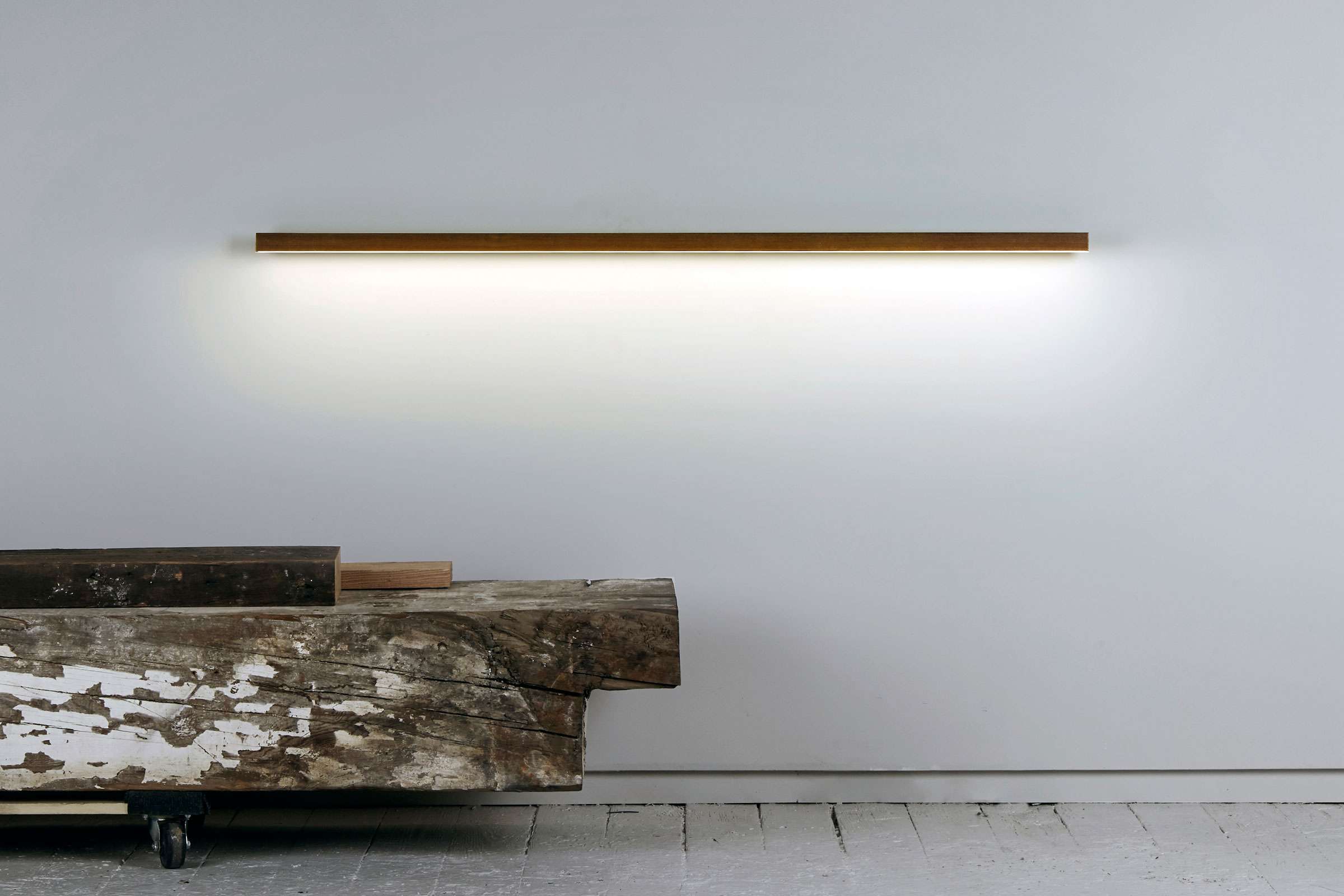
Wall-mounted linear light fixtures can help provide illumination and draw attention to certain spaces. Photo by Joseph De Leo
Linear lights—particularly mounted fixtures—may be installed along walls as a means of illuminating photographs, art, shelves, and other wall-mounted features. These fixtures can be mounted horizontally or vertically depending on the application and desired look.
Outdoors
Lastly, linear lighting can even be implemented outdoors, in many of the same ways as described above. Outdoor linear lighting is especially useful in highlighting and accentuating certain architectural features, allowing the building’s natural shape to stand out even in the dark.



